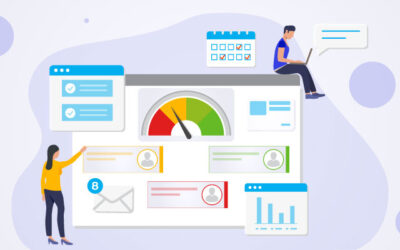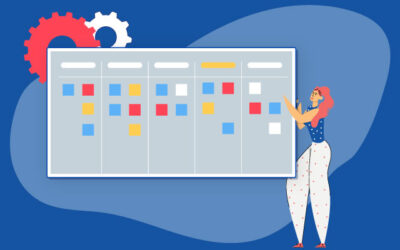How To Create A Creative Workflow Process
When talking of creatives and designing, there are just three reactions to a design- Yes, No, and Wow. Creating that ‘Wow’ factor is undoubtedly a mind-boggling task. However, it is not impossible. Every project in a business requires a collaborative and creative workflow process.
These workflows help you turn your ideas into reality. A workflow is like a blueprint before starting off the project. Along with being efficient, it should be creative as well. But, what exactly is a creative workflow? And how can one create a creative workflow process? What points are to be considered? Let us help you clarify it all.
Let us have a look at the creative side of the workflow processes.
Creative workflow- An overview
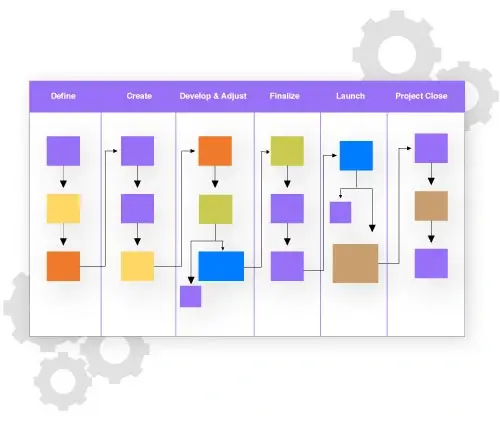
It is basically the creation and organization of key aspects of a designing and marketing project. Right from the organization of ideas to the launch of products, the creative workflow involves it all.
The bottom line of the creative workflow is assigning tasks to the team and setting deadlines and goals. This process is carried out in a documentation format, which shows the project flow process. It is essential to document to project as this allows the team to directly access and understand the workflow components.
What are the components of a creative workflow?
The project must be carried out in a well-defined manner. Right from ideation to campaign launch, everything must be worked upon with utmost perfection. But, how does one do that? For this, let us understand the components of a creative workflow.
1. Project ideation
The projection ideation phase is about briefing down the general idea of the project. How is it to be done, and what are the steps involved? In this phase, one must cover the following aspects:
- A detailed outline of the project mentions the goals, finances, target audience, deliverables, and timeline. This will allow the team to have an overview of the creative workflow process.
- Define the responsibilities of every member involved in the project. This will allow the tasks to be carried out seamlessly.
- Know which metrics to use to analyze the project progress.
- Set milestones for every task. Moreover, dividing the bigger task into smaller ones. This will ensure that the project is delivered well on time.
If you already have the project plan devised prior, it will make the later process efficient. This will also allow the team to focus and divert their energy towards creatives.
2. Content creation

This is the most important part of the creative workflow process. It involves the creation of a product according to the client’s requirements. It can be a design, a digital campaign, a marketing product, or others. Under this phase, here are a few things to consider:
- Creation of prototype versions with the team. Alongside, they can also discuss campaign ideas.
- Pre-scheduling meetings and check-ins. This will ensure that the work is done according to the timeline.
- The tools and software to be used by the team. This allows them to work effectively and collaboratively. Alongside, this also helps the team with effective communication during campaign creation.
3. Campaign approval

This is the most tedious part of the workflow process. This phase involves getting approvals from the clients. It isn’t just about getting validation. Rather, it involves a rigorous process of gaining internal reviews as well. The various aspects involved in this phase are:
- Content sharing with the clients, getting their feedback, and finalizing the changes.
- Optimizing the project according to the feedback provided by the client.
- Tracking the feedback and checking how well it is in accordance with the ideation phase.
- Getting the final approval from the clients.
4. Campaign launch
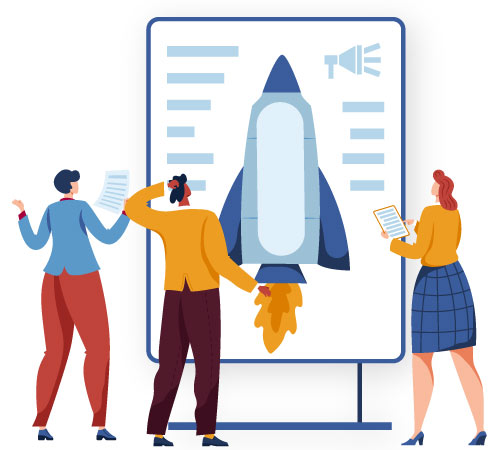
The last and final showdown- the campaign launch. Under this, the project is finalized and is put to action.
What are the benefits of a creative workflow process and management?
A creative workflow acts as a bridge between project management and creativity. It basically involves aligning the creative process involved in any project. But does it serve any benefits? Indeed, yes! It does. Rather, there is a list of the benefits it serves. These include:
- Defining project goals:
- The creative workflow helps in outlining the key idea around which the project revolves. This leads to better organization of ideas and projects.
- Project phase management:
- It allows the easier implementation of all the phases of a project. Alongside, it even allows us to sequence the tasks appropriately.
- Saves time:
- You cannot make impromptu decisions when working on a project. Everything must be laid out in front of you. The creative model saves ample time providing the team members with sufficient time to carry out the tasks.
- Effective communication:
- The creative workflow process maintains transparency among the clients and the business. It also allows effective communication among the team. Following this, like accounting and budget management, the other aspects can also be carried out effectively.
Ways to create a creative workflow process optimization
For effective workflow process and management, here are some of how the workflow process can be optimized:
1. Clarifying project scope:
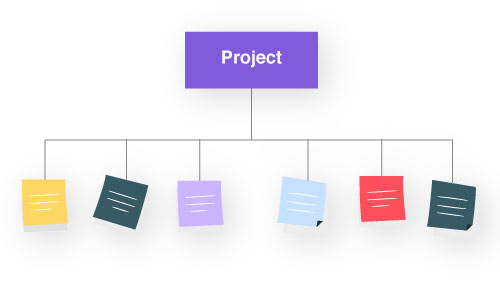
This is the first step before kickstarting the project. The aims, what, why, when, how? All these queries must be cleared while defining the project scope. This will help in devising a strategic workflow process and allow the team to provide creativity at its best levels. To avoid any confusion it is best to have a clear talk with the clients. Alongside, the same information should be flown down to the team.
2. Segment the responsibilities:
Whether your team is big or small, ensure that the work is provided to the members according to their capabilities. Assigning the roles and responsibilities of the team leads to accountability. Every individual knows what to do and well within the timeline. Alongside, this also avoids action overlapping making the process seamless.
Every task is clarified. All roles are assigned. No confusion takes place.
3. Draw out the workflow:
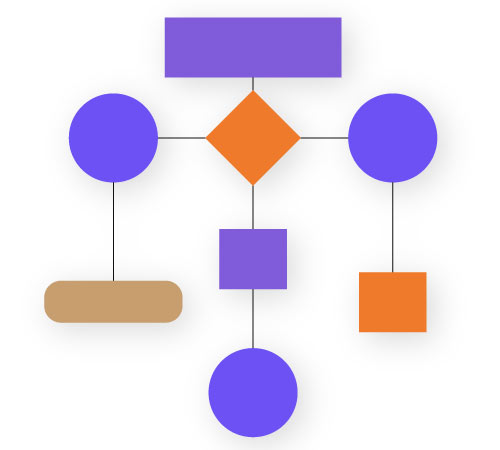
When you plan to construct a building, you just don’t start binding bricks. Before the process, a blueprint is created. Just like for a building, an architect creates the design. The same is the case for a project. A workflow is designed. This helps in visualizing the product well in advance and even figuring out the bottlenecks in a project.
However, before drawing out the workflow map, it is wise to check the previous products and creatives. This will help you know what worked well and what did not. Further, this will lead to a smoother workflow process.
4. Precision and creativity:
To make a good impression and earn the credits, it is important to satisfy the clients. Creativity is surely the lifeline for your digital project. Along with this, it also calls for innovativeness. Ensure that you maximize your creativity by focusing on the deliverables. Also, continuously work to upgrade the standards of creativity. This will not earn you a good reputation but also set your business apart from all others.
5. Appropriate tools:
Technology is everywhere. Even more, there are tools for every digital task you want to perform. Unlike traditional days, when people had to do everything by hand, you can do everything digitally nowadays. So, to make the process easier, it is imperative to implement the appropriate software. This will not just help your business grow but make the process easier for you as well.
Here are some of the things you can perform by integrating the appropriate tools:
a) Easy collaboration:
The team can work effectively on the same document by collaborating. This allows real-time editing, changes, and documenting. Also, this surely is a great way for your project to progress quickly.
b) Comparing designs:
It is quintessential to look at how far you have come when creating a design. With the right software in hand, you can easily track your progress. This will also allow you to check on the minor details of editing and corrections in the design.
c) Tracking the changes:
The software allows you to have an overview of the creative workflow process. You can easily track the historical changes. This includes filtering down the proofs, the day when edits were made, as well as the remaining tasks to be completed. Following this, the software even allows setting reminders to avoid missing out on any details.
d) Automated workflow process:
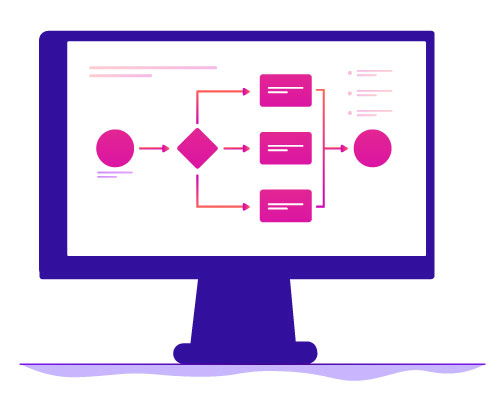
The automated creative workflow ensures that the project works smoothly through the pipeline. With the right software in hand, you need not even worry about building a workflow manually. It does it all for you in a few clicks.
After knowing all these benefits, are you looking for the appropriate tool? Well, Peppybiz has got you covered. We provide you with a workflow builder that gets you fulfilling outcomes. With our effective drip marketing, we let the prospects pass through the marketing funnel. Here is a list of features that we offer:
- Mapping out conversion paths
- Drip campaign personalization
- Automation of leads movement
- Scrutinizing the workflows
Conclusion
After knowing all the aspects of creative workflows, you just need to get started. Why not make your business more creative and organized simultaneously? So, with all the tools, just get going!


